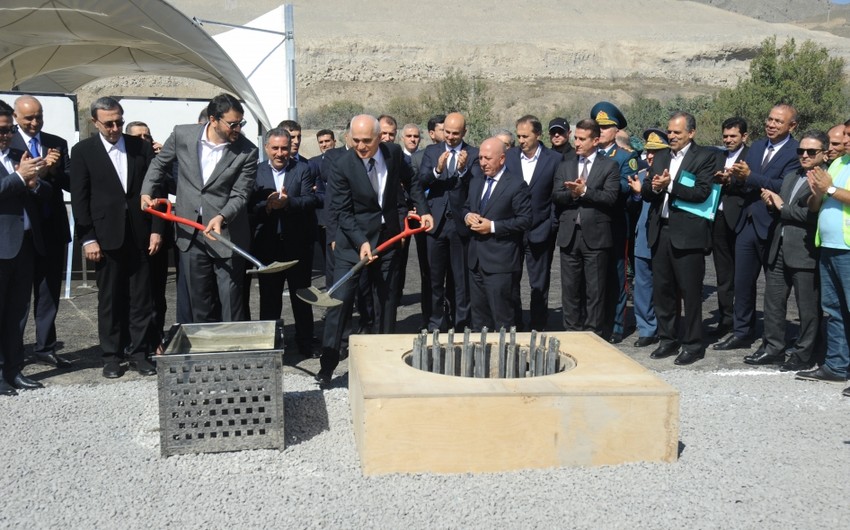Construction of the transport corridor to Nakhchivan was launched at the Iran-Azerbaijan zero point border of the two countries on Friday at Azerbaijan. Official delegates from both countries participated in the concrete-pouring ceremony to kick start the construction of the Aghband bridge. Iran’s Minister of Roads and Urban development, Mehrdad Bazrpash announced that Azerbaijan and Iran would establish the transport corridor at the border crossing near the abandoned town of Aghband.
The corridor is to be financed by Azerbaijan and monitored by Iran. The transport corridor is also expected to include a highway and a railway. In March 2022, the two countries set up a joint economic commission to oversee construction. The minister added that Azerbaijan will be responsible for building the bridge while Iran will focus on building the highway. The minister added that in the construction of the transport corridor, Azerbaijan was responsible for the construction of the bridge while Iran would place its focus on the construction of the highway. The two countries involved also came to a consensus on the construction of the bridge and the railway line with the minister announcing that it will be carried out with the investment of both countries.
Read Also: Azerbaijan’s Astara-Iranian Border Highway Receives Funding
The Transport Corridor Set to Increase Transit Potential of The Region
Officials from Azerbaijan and Iran expressed utter confidence that the bridge would increase transit potential of the region. The officials also believe that the transport corridor will further develop transportation routes and act as a symbol of friendship and camaraderie between the two countries. The sides are said to also discuss the expansion of ties in various areas including trade and transit. The meeting between the officials yielded several agreements such as a decision to increase transit traffic and launching a new border terminal over the next four months. The countries also decided to launch border markets and increase joint investment in the construction of a railway port.

